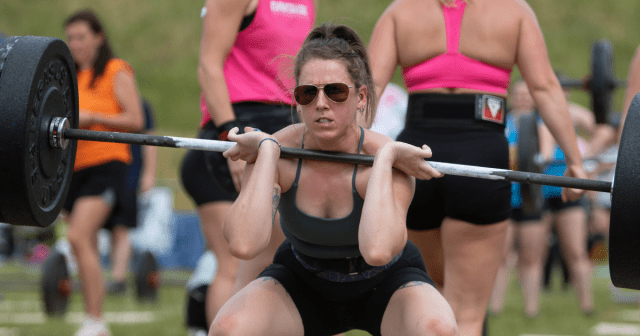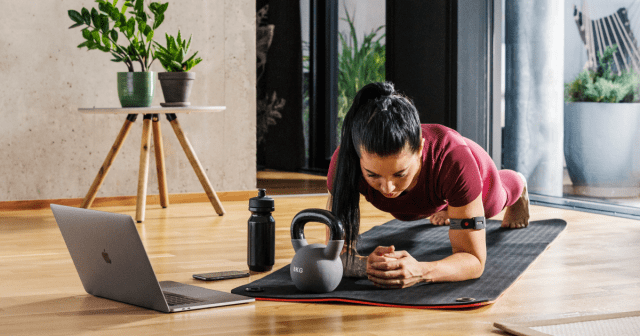Exercise is key in taking care of your body and mind, but too much exercise can lead to or exacerbate burnout. Here are some experience-based tips on how to maintain balance and exercise without workout burnout.
This is not one of those articles where a book smart expert presents theories without any firsthand experience.
Yes, the expert we interviewed is smart. And yes, there is research and facts behind the ideas presented here but more importantly, this is a real-life story that describes what really happened: a story that may just make you have one of those “aha” moments.
If you’re struggling to find balance between working out and other responsibilities and commitments, we hope Annastiina Hintsa’s story about her workout burnout and lessons learned will help you pause and take a moment to reflect:
Is there a way to reach my sports goals without sacrificing everything else?
Don’t Go too fast and too furious
Annastiina Hintsa learned the hard way that success doesn’t always lead to well-being. In fact, in her case, it led to quite the opposite.
Under the age of 30 she was working insane hours and traveling between three continents as a consultant, eating chocolate bars from the minibar for dinner and running marathons.
She was rocking it, hustling at full speed, all fast and furious. Until she hit a wall – or the floor to be exact. She was rushing to a meeting, taxi waiting downstairs when her world suddenly went black.
After blacking out, rolling down the stairs, and hitting her head, Hintsa ended up in the hospital and was diagnosed with severe burnout under the age of 30.
It was time to take a break.
Find Your Inner Motivation
That’s when her father, a prestigious sports physician Dr. Aki Hintsa, asked her the same questions that he had asked his clients, like runner Haile Gebrselassie, F1 Champions Lewis Hamilton and Sebastian Vettel, and several Fortune 500 leaders:
- Do you know who you are?
- Do you know what you want?
- Are you in control of your life?
According to the Hintsa Performance method, this is the way to find the Core – your inner motivation, which is essential to make sustainable changes and achieve your goals.
Of course, getting to the bottom of your purpose and true values is easier said than done – not to mention actually applying those values to your everyday life.
“What makes it so challenging is that we don’t have just one, but three different identities,” Hintsa says.
If these three identities (based on Higgings’ Self-Discrepancy Theory) are in conflict or too far apart from each other, it may be hard to identify which is which:
- Who you are (actual)
- Who you would like to be (ideal)
- What (you think) others expect you to be (ought to be)
“So, if your ‘ought to be’ identity is dominating, it’s possible you think you value something that is actually coming from outside, like success and accomplishment.
You may tell yourself that if you just complete that IRONMAN 140.6, then you’ll be satisfied,” Hintsa says. And who’s to say you won’t be, but still, it’s not enough to be just an athlete.
Even if you bathe in success and glory, ask yourself this:
Do I have an identity outside my sports goals?
Tell Yourself: It’s Just Sports
“The foundation of success is separating your identity from your goals. If your identity depends on your sports performance or fitness results, your ability to face challenges and handle disappointments in that area will be weak,” Hintsa explains.
I have witnessed up-close that successful athletes have roles outsides their athlete identity – they are also parents, spouses, friends, children, and entrepreneurs.
“It’s natural that an athlete’s life revolves around sports to a large extent but it needs to be balanced with other aspects, such as friends, family, and community. If your whole identity is tied to sports performance and success, your world will come crumbling down when your career is over.”
“Different roles don’t have to conflict with the athlete role: if you’re driven in sports, you can be driven in your career, or if you’re a team player in sports, you can use that role in friendships and work, too.”
For an athlete, the professional role is often dominant, but it shouldn’t be the only one.
Ethiopian long-distance running legend Haile Gebreselassie wasn’t just the world’s best marathon runner, but also a family man, businessman, and important in his community. Because he was more than an athlete, he didn’t sweat it even when his athletic career was at stake.
“Don’t worry, doc! It’s just running.”
Hintsa remembers her father being nervous about performing an achilles tendon surgery on Gebreselassie that could have ended his running career if something went wrong. But the runner legend was calm and comforted the doctor:
“Don’t worry, doc! It’s just running.”
That’s putting things into perspective.
Choose and periodize
“After my burnout, I put things into perspective and made some concrete changes in my life,” Hintsa says. “I took time off from work and when I returned, I cut back on my working hours and workload. I made mornings my time and went back to my running hobby.”
Hintsa couldn’t stop until it was too late and learned the hard way what happens when you obsessively focus on one area of your life – but she also learned how to succeed and achieve her goals without losing balance.
That means you should periodize: only temporarily prioritize one specific area or goal.
“The key is to make conscious sacrifices, not to let them creep up on you,” Hintsa says.
“You can have high-intensity periods in sports during which you make sacrifices in other areas of life but after the intensive period, you need to have a proper recovery period. Then, you should go back to your normal state where you reinstate balance between all your different identities, not just your athlete identity.”
“High-intensity should never be the ‘normal’. Your normal low-intensity state should be prevailing 70-80% of the time. Even the world’s best marathon runners train with low intensity 78% of the time, with medium intensity 4% and 18% of their training is at marathon speed,” Hintsa says.
Hintsa urges to avoid having two intensive periods overlapping: “Even if you could pull it off schedule-wise, don’t do it!”
“If you try to juggle an ambitious work project and an intensive marathon training period at the same time, it may be too much. Even if your work isn’t physically demanding, your overall stress levels affect how well and fast you recover from physical exertion. And vice versa, if you’re physically exhausted, it will affect your mental state.”
Find a voice of reason
Annastiina Hintsa has found that making herself accountable helps to prevent getting too obsessed with achieving a specific goal.
“Being accountable to yourself means that you define what’s important to you and what are the things you need to maintain balance. Write it down, don’t make a mental note only, but actually put it into words – it helps! When you feel like you’re slipping, go back to what you wrote.”
“Even better if someone else holds you accountable. Some of us need a permission to take a day off from training – or may need to be forced to take a break – so it’s good to have someone close to you to help you maintain balance. But not too close – it’s usually better if your voice of reason is your friend or coach, not your spouse.”
And when you hear that nagging voice at the back of your head saying that you should do something… pause and think:
Who defines the should? Is it really something you should or is it just you being your toughest critic?
If you liked this post, don’t forget to share so that others can find it, too.
Or give it a thumbs up!
I like this article
Please note that the information provided in the Polar Blog articles cannot replace individual advice from health professionals. Please consult your physician before starting a new fitness program.






